-
 OpenText Capture CentreData Capturing Solution
OpenText Capture CentreData Capturing Solution
Although all businesses are unique, all suffer from the same challenges in order to stay competitive and profitable. The application of technology can proliferate many of business benefits and solve many of the challenges. Do some of these sounds familiar?
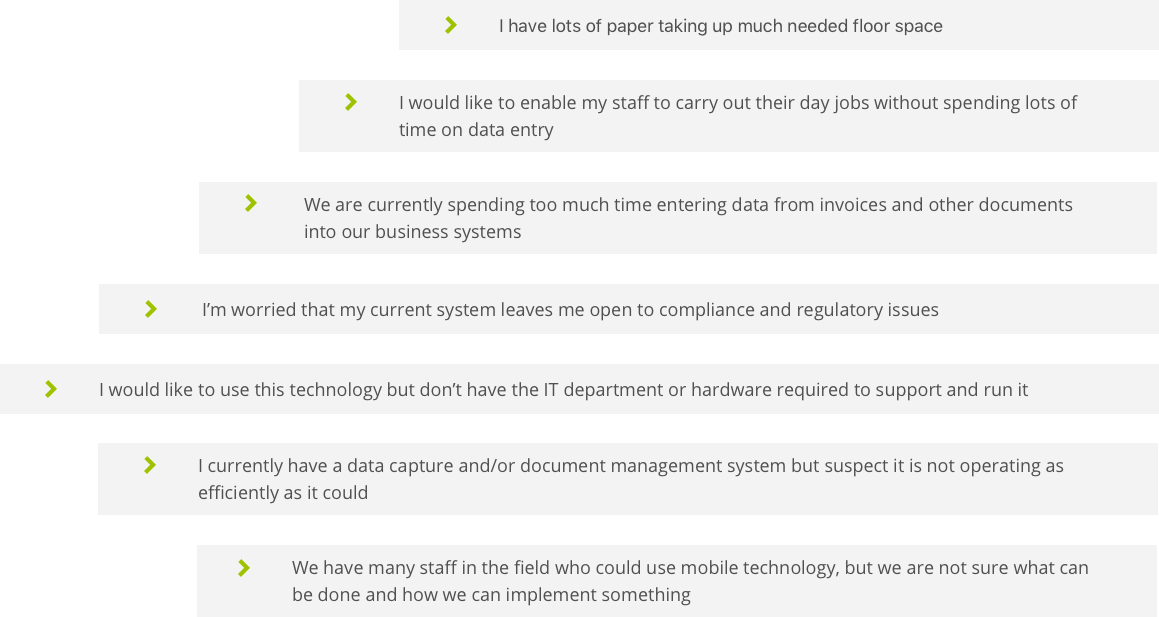
If they sound familiar to you, these issues are collectively grouped as document and data capture issues of which Greensboro have many years of experience in solving the tasks. Greensboro offers Tier 1 Capture Solution in the market by OpenText, which connect and deliver electronic data and documents to a variety of content repositories, but with different focuses of tasking.
Data Capture platform automates and accelerates business processes by capturing all types of paper and electronic documents and forms, transforming them into accurate and actionable information, and delivering it all into core business applications, processes and workflows.
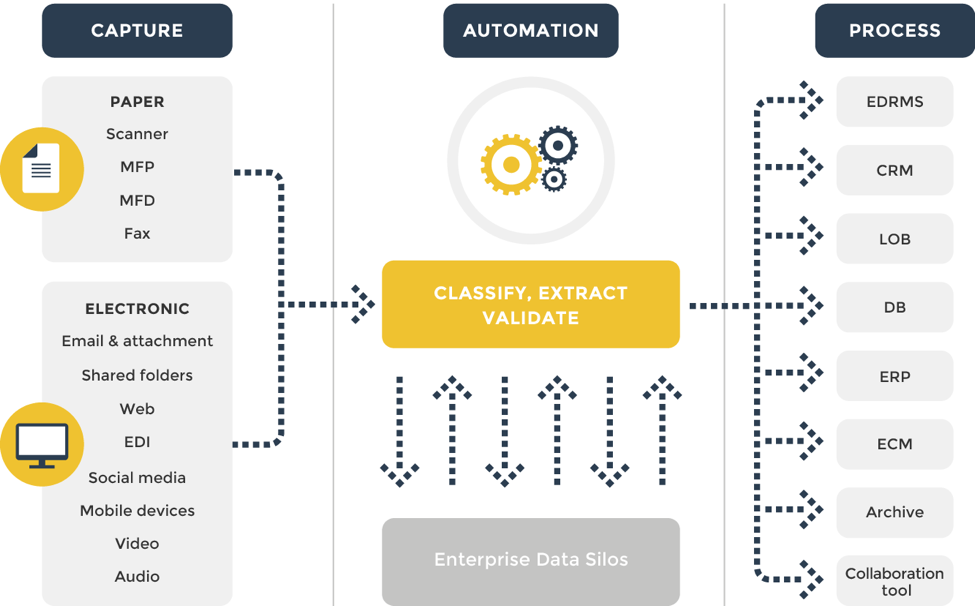
Technology behind
There are multiple methods for capturing data from unstructured documents (letters, invoices, email, fax, forms)! The list of methods identified below is not exhaustive but it is a guide of the appropriate usage of each method when addressing business process automation projects.
As well as considering the method of data capture, due consideration of the origins of the documents(s) that need to be captured must happen, to see if the documents are available in their original electronic format which, has the potential to massively increase data capture accuracy and remove the need for printing and scanning. Methods of capture from documents in electronic format are identified below.
Whenever a method of capture is considered, it is advisable in the first instance to consider the original documents, to determine if the document or form can be updated to improve the capture/recognition process and method. Investigation of the existing line of business systems, to determine what additional metadata can be extracted for free using a single reference, can provide significant advantages!
The correct method(s) of metadata capture for a business process automation project, will consider all the methods identified below and the use of one or a number may be appropriate.
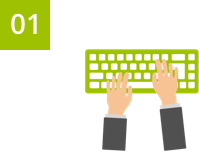
Manual keying
Manual keying of metadata from unstructured data is appropriate for data that is received in low volumes and results in low levels of recognition by intelligent data capture products (IDR, ICR).
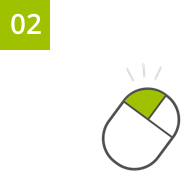
Single-Click
Single-Click is an Optical Character Recognition (OCR) tool that can be used to capture machine produced characters in low volume ad-hoc capture applications and populating a line of business application.
OpenText Capture Center (OCC) extracts information from bitmap documents by using the most advanced Optical Character Recognition (OCR), Intelligent Character Recognition (ICR), and Intelligent Document Recognition (IDR). Using OCC, your organization saves money from reduced manual keying and paper handling, speeds up business processes by using digital work ow right from the start, improves data quality by capturing all relevant data from documents, and reduces compliance risks by keeping track of document-related activities.
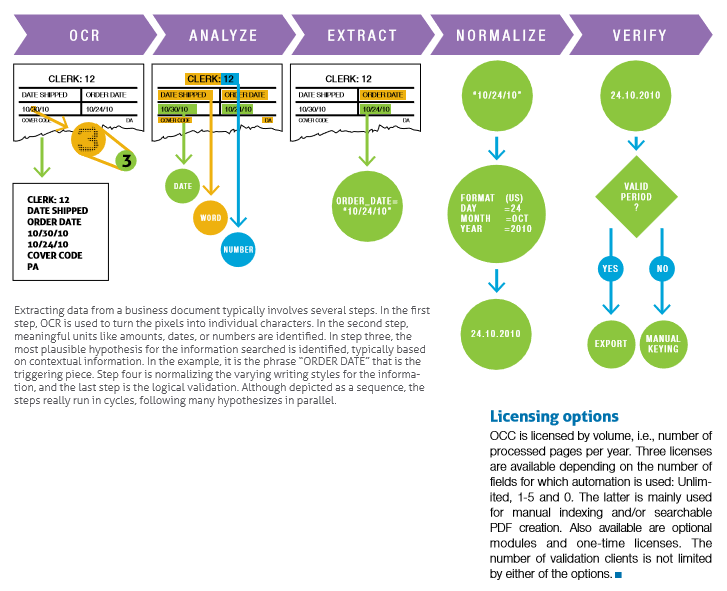
OCC is used in many areas, including the following:
Digital mailroom –
The digital mailroom automatically captures and classi es all information entering an organization and then routes it to the appropriate person, department, or backend Enterprise Resource Planning, Customer Relationship Management, Enterprise Content Management (ECM), or work ow solution. It also provides tracking and auditing of that correspondence.
Traditional mailroom processes are slow and inef cient, dominated by paper documents. By moving to a digital mailroom, companies can reduce operational costs, streamline and accelerate business processes, and deliver improved customer service.
Transaction and process management –
OCC captures images and processes data for certain business processes. The purpose of scanning is to input data into a business process. Ideally, all business data for a transaction should be extracted and validated. As a result, the process may be fully automated. The scanned docu- ment will be attributed by some metadata, stored in an archive, and associated with the business transaction.
Typical documents that may be processed are order entries, application forms, insur- ance claims, or business reply mail. Invoice processing is also a dominant application for this business-use case, and OpenText Invoice Capture Center is a precon gured application of OCC dedicated to this appli- cation. Automation with OCC reduces costs, increases productivity, increases ef ciency of business processes, and improves information quality.
Scanning documents into electronic files –
Documents have to be put into a reposi- tory or classi ed and routed to a central- ized point as quickly as possible.
Typically, the process is batch oriented. The documents are scanned and indexed automatically, sometimes with keyentry to enter or correct indexes. Presorting is elimi- nated through automated classi cation. The process is managed centrally, and compo- nents of the process may remain local within the scanning system or distributed remotely.
Documents will then be available in the content management and work ow systems for fast access, archiving, and knowledge management. Apart from this, main costs associated with managing paper (manual handling, storage, retrieval, loss, compliance) will be reduced dramatically.
